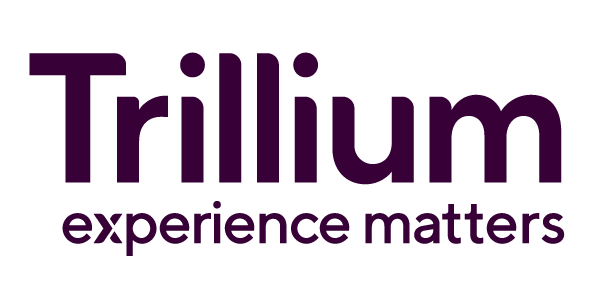One week into working from home, our team has already run several remote workshops. We’ve gathered their top tips and advice for getting the most out of these sessions, based on what we’ve learnt so far and feedback from our clients.
At Trillium, we continually engage with our clients via working sessions throughout the discovery and creative processes. These workshops are designed to gather needs and requirements, share concepts and ensure everyone is on the same page. While taking the usual internal meetings online is relatively straightforward, extra care and attention is needed to ensure that a remote collaborative working session is productive, engaging and enjoyable for everyone involved. We address these unique challenges with our recommendations below.
It’s good to talk.
First and foremost, it’s more important than ever to keep communication flowing. Strong partnerships with our clients are at the heart of everything we do, and good communication is key to this. While use of email, phone and chat is by no means new in the workplace, we’re all currently required to rely on these for communication that would normally happen face to face. We’re taking extra care to stay connected, both with our clients and our fellow colleagues at Trillium. Sometimes it’s as simple as remembering to pick up the phone over sending yet another email.
Make sure you can see and hear each other.
Use video calls where possible (bandwidth permitting). Seeing each other helps to maintain a collaborative tone, and don’t underestimate the importance of reading body language for effective communication. This is critical when the objective of a session is to tease out requirements; if you can’t fully engage, it’s much harder to build a comprehensive understanding of the differing viewpoints present. If it’s possible to use two screens, you’ll find this helps by ensuring you can keep an eye on the video feed while working in another window. This is especially true for presenters. Use a headset with an in-built mic if you can; this minimises background noise, which is distracting for everyone.
Keep it intimate.
Reduce the number of meeting attendees to ensure everyone can participate effectively. In the context of a workshop, our objective is not purely to disseminate information. A collaborative session is of no use if only some of the attendees can contribute; everyone should have an opportunity to get involved. We recommend trying to stick to a maximum of six people where possible. For sessions that require the involvement of more than six people, consider appointing one person to gather, prioritise and raise points for discussion or questions to be answered via a chat window.
Stay focused with good housekeeping rules.
Make sure to clarify and implement the same housekeeping rules you would expect from a face-to-face meeting. These are simple things that we usually take for granted – such as clearly designated roles and shared expectations for the session – but which are sometimes forgotten when meetings are taken out of their normal context. Share an agenda and schedule any breaks ahead of the meeting to ensure everyone knows what to expect and when. This is particularly useful if some participants are only available to join for part of the session; agenda items can be arranged accordingly. For larger meetings especially, appoint an individual to facilitate the meeting and manage turn-taking.
Keep it simple.
Don’t overthink the tech. It’s tempting to use this as an opportunity to try out new tools, but untested ones run the risk of complicating things unnecessarily. Sometimes it’s best to stick to what you already have to hand. Whiteboards can be recreated using flipcharts on video calls, or by screen sharing an open Word document or PowerPoint presentation. At a push, making notes or diagrams on a notepad and holding it up to your camera will do the trick.
Be prepared and have a back-up plan.
Where possible, prepare templates and proformas in advance, so that they can be filled in during the workshop. We’ve found this to be a beneficial outcome of this way of working, as it means post-workshop transcription is unnecessary. Follow-up documentation is distributed much more quickly, as the ‘write-up’ effectively occurs in real-time, where stakeholders have been present. It also goes without saying that it’s good to have an alternative planned for hosting a remote meeting, in case technical problems should arise.
Have a chat.
One of the most important aspects of face-to-face engagement with our clients is the having the opportunity to foster and develop strong working relationships, which set us in good stead to build lasting partnerships that add real value for our clients. While it’s important to keep sessions on track, don’t forget to check in with each other informally just as you would at the beginning or end of an in-person meeting. Finding light-hearted conversational themes per group can also be very rewarding; it creates a sense of personal continuity that each working group shares. It also boosts morale, helps to retain a sense of normality, and is a powerful way to stay connected while physically separated.
